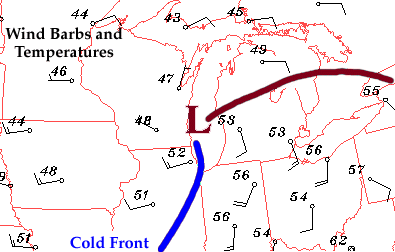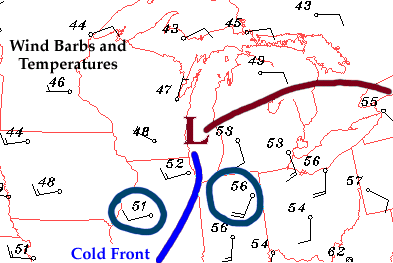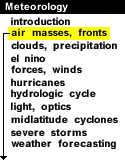
|
Cold fronts are not always identifiable by simply examining the temperature field alone. Other fields must also be taken into consideration. For example, below is a surface weather map with an analyzed low pressure center (red "L") and associated cold front (blue line) and warm front (red line). The numbers are surface temperature reports and the symbols are wind barbs, indicating wind direction and wind speed.

At the time this map was generated, temperatures ahead of the cold front were in the 50's, while behind the front, temperatures were only slightly colder (in the 40's and 50's). However, notice the change in wind direction (as indicated by the wind barbs) from one side of the cold front to the other. Winds ahead of the cold front were generally from south-southwest, while behind the front, winds had shifted around and were blowing out of the west. This sudden shift in wind direction was the key indicator that a cold front was present.

A sudden change in wind direction is commonly observed with the passage of a cold front. Before the front arrives, winds ahead of the front (in the warmer air mass) are typically out of the south-southwest, but once the front passes through, winds usually shift around to the west-northwest (in the colder air mass).

definition |
|

lower dew points |





